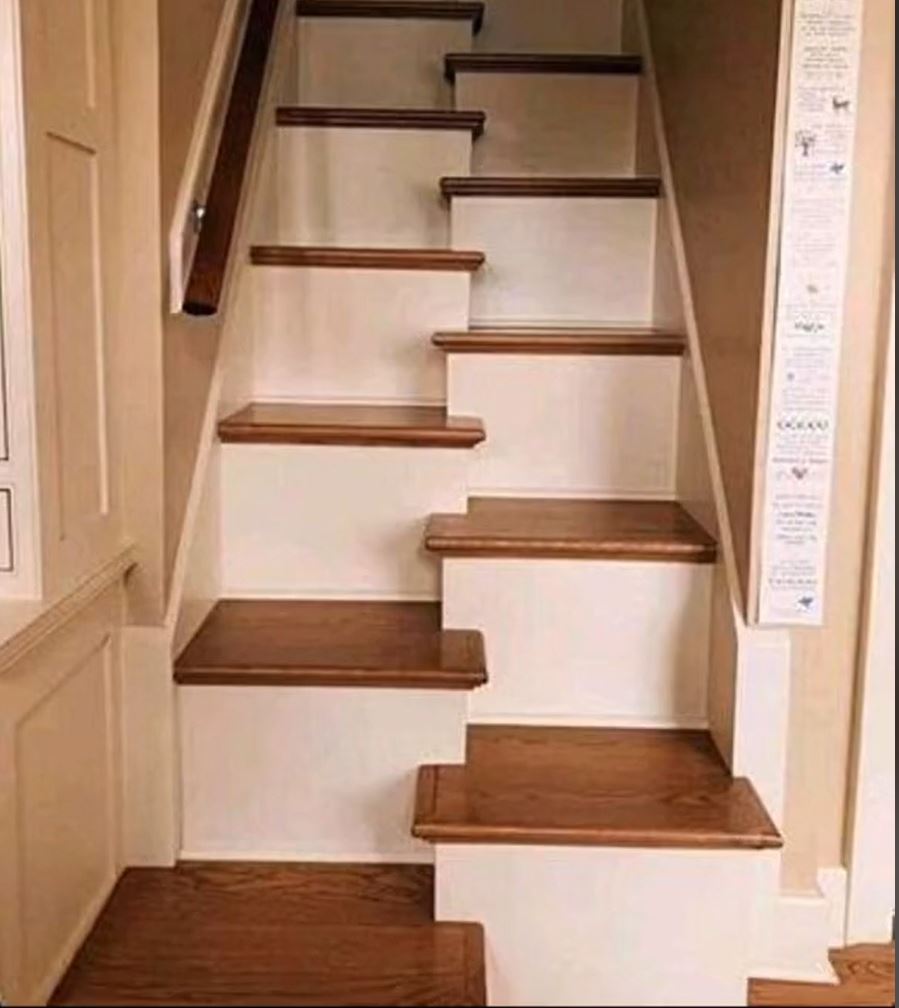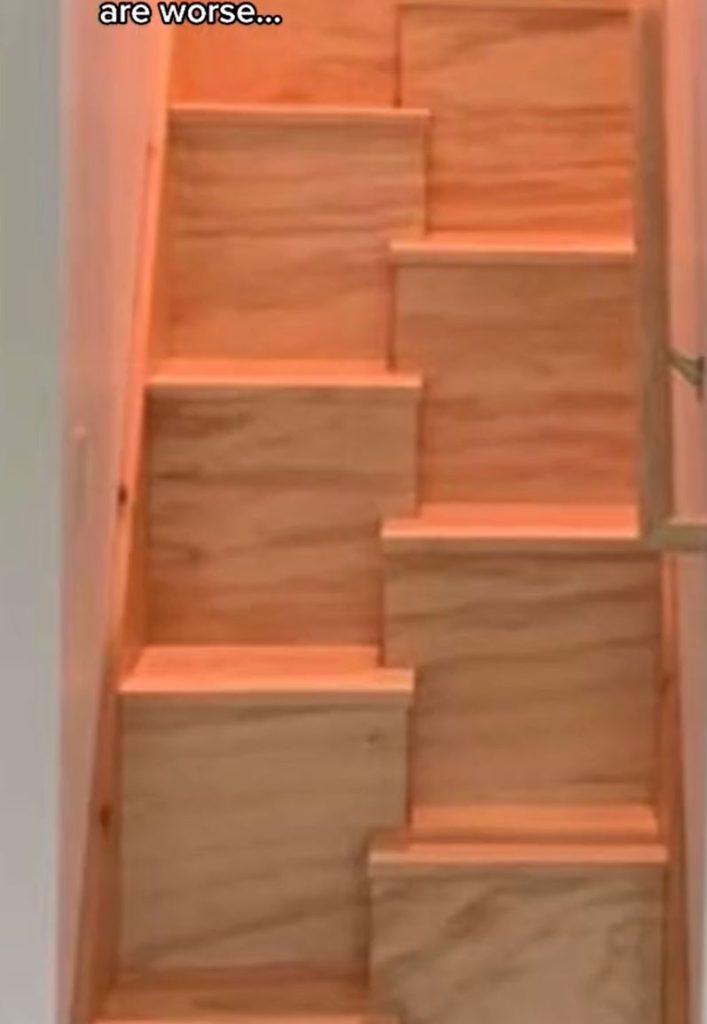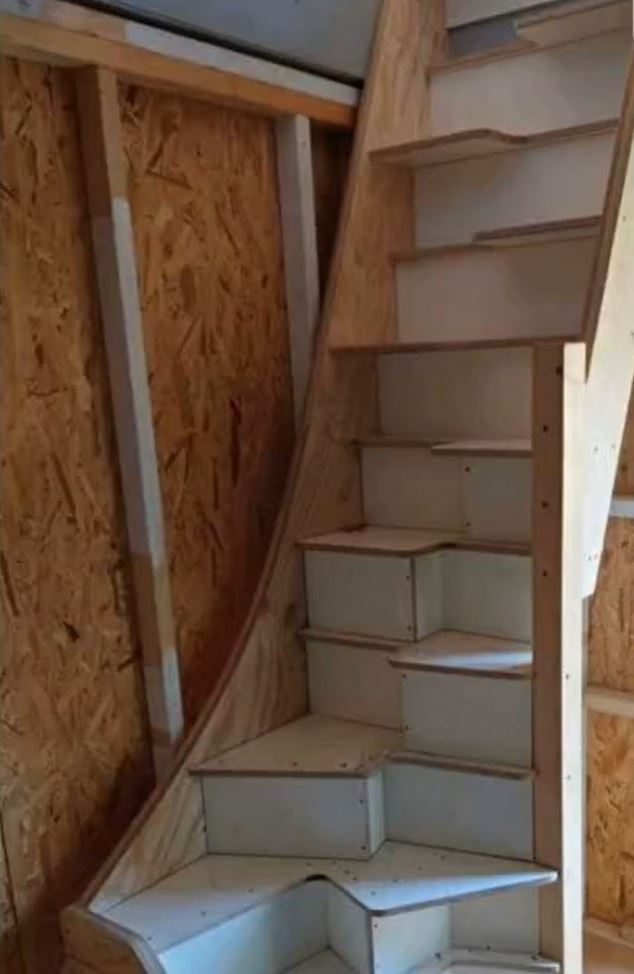A unique, if not peculiar, design feature known as witches’ stairs, made its way around TikTok in March a couple years back. Although the stairs have an unusual history, it’s not for the reason its nickname would imply. They’re a ballfing design and supposedly, weren’t built on superstition after all. Moreover, when properly designed and installed, they can be functional and aesthetically pleasing.
Witches’ Stairs aren’t what they Appear.

Although it’s far less exciting than the superstition behind them, witches’ stairs are surprisingly helpful, particularly in homes with limited space. They might be found in attics, lofts, and tiny houses. Essentially, witches’ stairs were designed to save space while still providing the functionality of getting from one floor to another. Architects often refer to them as ‘alternate tread stairs.’
How Witches’ Stairs Function

This design was intended to save space in two ways. First, each step is only half as wide as traditional steps; then the steps are staggered. Both help to save space because they symbiotically ensure a staircase isn’t as wide as one found in a traditional home, let alone a grand staircase. These smaller staircases may also serve as added storage for books or display treasures. According to Scott Schuttner, author of “Basic Stairbuilding, “the distance between treads on a given side of an alternating-tread stair is actually twice the unit rise, which gives you more free tread area and therefore a safer stair in theory.”
Not only are witches’ stairs functional. Contrary to popular belief, they are up to building codes and safety standards throughout the U.S. A standard staircase is 3 feet wide. Meanwhile, a residential witches’ staircase is typically between 27 to 30 inches wide.
Real Origins

In 1985, an entrepreneur named J.M. Lapeyre patented a metal version of witches’ stairs made of metal. He envisioned the revolutionary stair alternative to be used in place of ladders, both in commercial and warehouse settings, replacing unsafe ladders in tight spaces. Interestingly, the design is also used on commercial ships and oil rigs and can be called ship stairs or ship ladders, in addition to witches’ stairs and alternate tread stairs.
Misconception

When the videos of witches’ stairs first circulated TikTok in 2021, they were accompanied by an urban legend. The legend states that the staircases date back to the 17th century. Allegedly, they were built into homes in Massachusetts to ward off witches during the Salem witch trials because “witches can’t climb up them.” This theory has since been disproven but another lurks in the shadows. Rumor has it that Thomas Jefferson came up with the idea and as a result, the design for witches’ stairs is often called the Jeffersonian or Jefferson stair. However, an original design was also documented in “Monckton’s One Plane Method Of Hand Railing and Stair Building,” published in 1888.
Debunking the Myth

Although the origins of design are a little unclear, one thing is certain. There’s no evidence anywhere in history that backs the idea that witches’ stairs were designed with the belief that they would ward off witches. According to Robin Briggs, in “the massive historical literature, nor the many manuscript sources” that he’s studied, there isn’t “any mention of stairs that could disable witches.” Oddly, many people who had this unique staircase also had “buried witch bottles under the threshold. Or incorporated dead cats in the fabric, as protection against bewitchment,” Briggs explained, continuing it “is indeed pure disinformation.” “The nearest belief was that if you put a broom over the door lintel a witch who entered the room would be unable to leave it.”
While it’s fun to speculate about myths and legends, it’s also interesting to learn the true history behind witches’ stairs. Either way, they’re a unique and decorative alternative to full-size staircases, if not a fun and quirky use of decor.